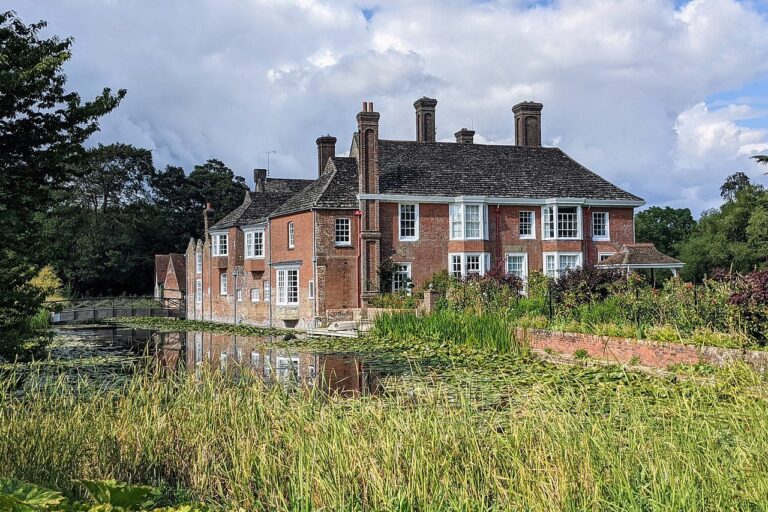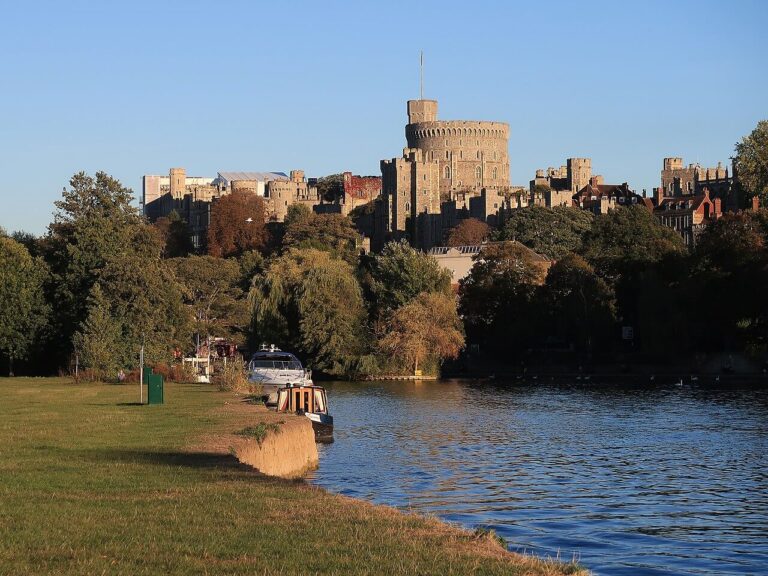Visit The Best Historic Castles in Kent, England
In the South East corner of England lies the county of Kent. Kent is one of the home counties, bordering Greater London in the North and on the East in borders the English Channel with France beyond.
Kent has a long history, it is home to Canterbury Cathedral (the oldest cathedral in England) and Rochester Cathedral (the second oldest cathedral). But this interesting history can also be seen in the Kent castles. From castles dating to the Norman times to a Tudor royal residence and a castle that helped bring the English troops back from the beaches in Normandy during D-Day.
In this post, you will find the best castles in Kent. From Norman castles to the family home of Anne Boleyn (Henry VIII’s second wife) and beautiful historic houses owned by influential people. This list contains plenty of castles, stately homes, and country houses that are a perfect place to visit for the whole family. Surround yourself with English history and visit magnificent gardens on the English south coast.
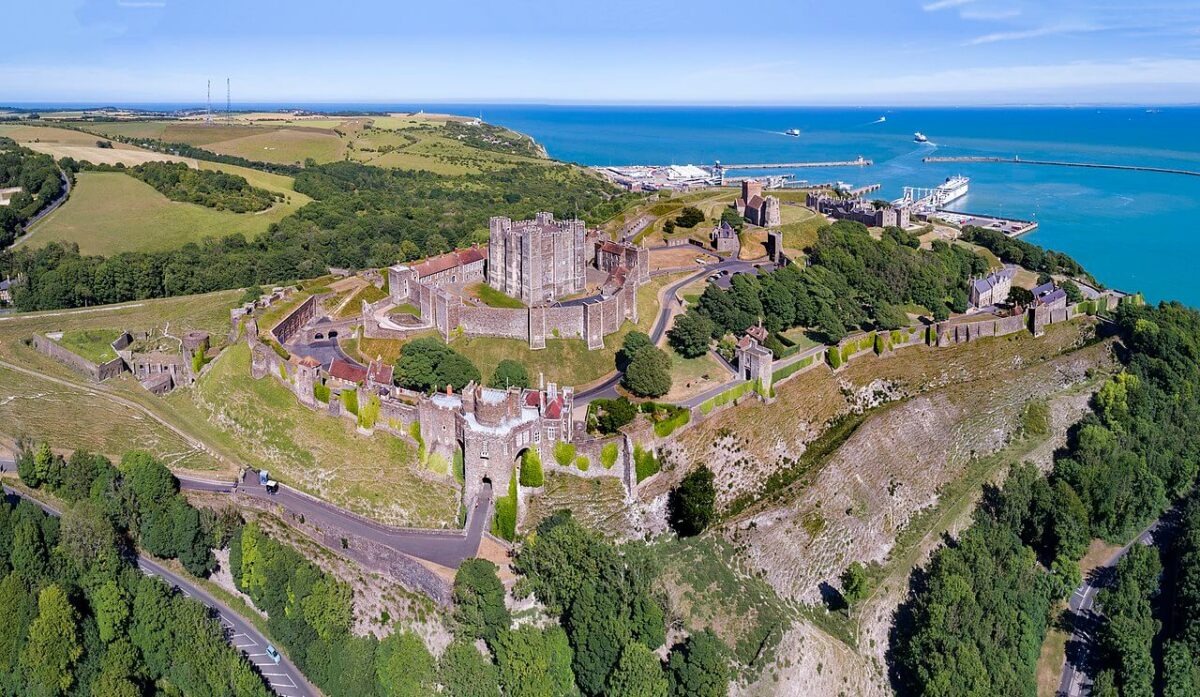
Dover Castle
Set upon the famous White Cliffs above the English Channel stands Dover Castle. The castle was founded in 1066 and it has been the location of significant moments in English history.
The Norman castle is the longest-serving fortress and one of the largest castles in England. However, of that Norman structure are no remains as King Henry II rebuilt the castle.
Dover Castle also played an important role in the Battle of Dunkirk. It is from this castle that they tried to evacuate hundreds of thousands of Allied troops. The story of Dunkirk can be found in the Secret Wartime Tunnels.
But you can also explore the medieval recreated rooms in the Great Tower or visit the castle grounds with mighty battlements, a Roman lighthouse, and medieval tunnels.
Where: Dover
Built: 1066
Style: Norman/Medieval
Visitor information: the castle is open throughout the year. Visit the website for the current opening times.
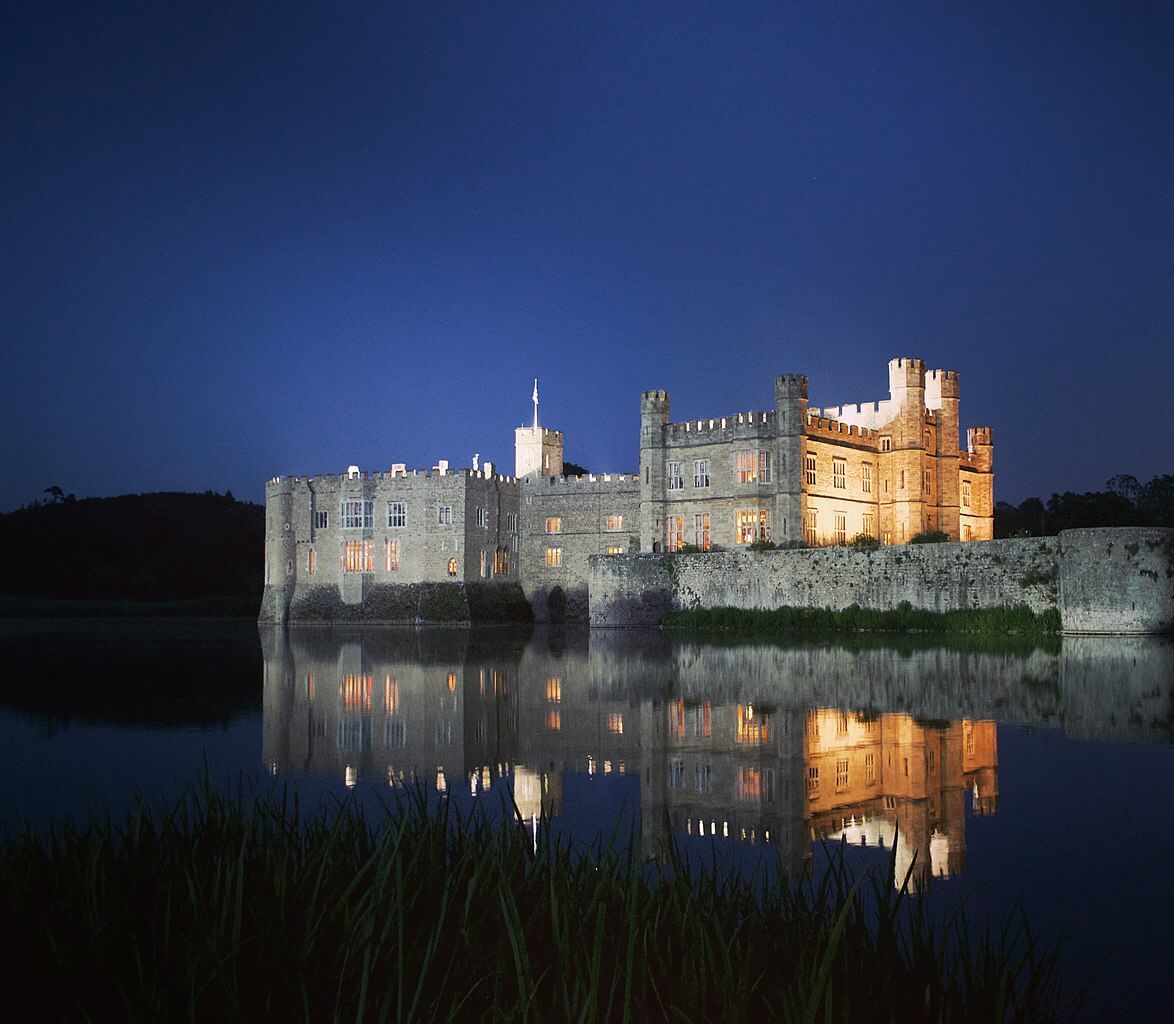
Leeds Castle
The origins of Leeds Castle date back to 857 when it was owned by a Saxon chief. Since 1278 the castle was owned by the Royal Family. It was King Edward I who bought the castle for his Queen, Eleanor of Castile and presumably created the lake that surrounds the castle.
King henry VIII transformed the castle for his wife Catherine of Aragon. In the castle, you can still see a painting of his meeting with Francis I of France.
Leeds Castle’s current Tudor appearance dates back to the 19th century when the Wykeham Martins family remodeled the castle. The last private owner was Lady Baillie who redecorated the castle’s interiors. When you visit the castle you will step back in time to the 1930s.
The castle has a lot to offer, from 1930s interiors to stunning gardens and parkland. The estate includes children’s playgrounds, a maze and underground grotto, and an adventure golf course.
Where: Leeds
Built: 857 (19th century Tudor remodel)
Style: Tudor
Visitor information: the castle is open daily. Visit the website for more information.

Walmer Castle
Walmer Castle is a former Royal Castle and Tudor fortress in Kent. The castle was built by King Henry VIII to defend the southern shores of England against an invasion from France and the Holy Roman Empire.
Later, the castle became the home for the Lords Warden of the Cinque Ports (like the Duke of Wellington, Winston Churchill, and the Queen Mother).
Surrounding the castle are beautiful gardens with a kitchen garden, the Queen Mother’s Garden, wildflower meadows, and woodlands.
Where: Deal
Built: 1539
Style: Tudor
Visitor information: the castle is open throughout the year. Visit the website for more information

Rochester Castle
Rochester Castle is placed in a strategic location astride the London Road, on the banks of the river Medway, guarding the River Medway Crossing. The stone tower or keep is one of the best preserved Norman towers in England.
The Kentish ragstone Norman tower-keep was built by the Archbishop of Canterbury and in 1215 it endured a siege by King John.
The castle was rebuilt by Henry III and Edward I and it was kept as a fortress until the 16th century.
Where: Rochester
Built: 1087
Style: Norman
Visitor information: the castle is open throughout the year (closed on Mondays). Visit the website for current opening hours.

Deal Castle
Deal Castle is a Tudor artillery castle in the seaside town of Deal. The artillery fort was built by King Henry VIII as part of the King’s Device program. Together with Sandown Castle and Walmer Castle did it need to protect the country from invasion by France and the Holy Roman Empire.
The castle has unique architecture with a keep with six inner and outer bastions. In total, the castle had 66 firing positions for artillery.
In the 18th and 19th centuries, the castle was no longer used as a defensive castle and therefore it was transformed into a private house for the castle’s captain.
Where: Deal
Built: 1539
Style: Tudor
Visitor information: the castle is open to visitors. Visit the website for current opening hours.

Tonbridge Castle
Tonbridge Castle is a 13th century motte and bailey castle. The Medieval castle was built by the de Clare family. Located close to the market town of Tonbridge you can step into 950 years of history by visiting the gatehouse, the Great Hall, and the winding stairs. From the motte you have a gorgeous view of the town.
From Tonbridge Castle, you can take a 6-mile cycle ride (the Tudor Trail) to Penshurst Place.
Where: Tonbridge
Built: 13th century
Style: Medieval
Visitor information: the castle and grounds are open daily. Visit the website for more information.

Penshurst Place
Penshurst Place is one of the finest examples of 14th century architecture in England. The manor house was once owned by King Henry VIII but in 1552 the house was granted to the Sidney family by King Edward VI. It is the birthplace of Elizabethan poet, courtier, and soldier Sir Philip Sidney.
With a visit to Penshurst Place you delve into Tudor history, but surrounding the house are also beautiful gardens, and adventure playground, a woodland trail, and a maze.
Where: Tonbridge
Built: 1341
Style: Tudor
Visitor information: the house and gardens are open daily from April to October. Visit the website for current opening hours.

Scotney Castle
Set in Romantic Picturesque garden you will find a Victorian country mansion and the ruins of a 14th century moated castle. The gardens of Scotney Castle are a Site of Special Scientific Interest. The wooded gardens has a fine collection of rhododendrons, azaleas, kalmia, summer wisteria, and roses. The central feature of the gardens are Scotney Old Castle, the ruins of an Elizabethan castle.
In 1835 the new Scotney Castle was built, after a design by Anthony Salvin. The castle is an early example of Tudor Revival style in England.
Where: Lamberhurst
Built: 1835
Style: Tudor Revival
Visitor information: the estate is open throughout the year. Visit the website for more information.
Canterbury Castle
Canterbury Castle is one of three Royal castles in Kent (the others being Rochester Castle and Dover Castle). All three castles were built shortly after the Battle of Hastings. The original castle was a wooden motte and bailey castle built-in 1066. The motte of this castle is visible as the mount in the Dane John Gardens. The stone keep was built during the reign of Henry I and is now in a ruinous state and closed to visitors.
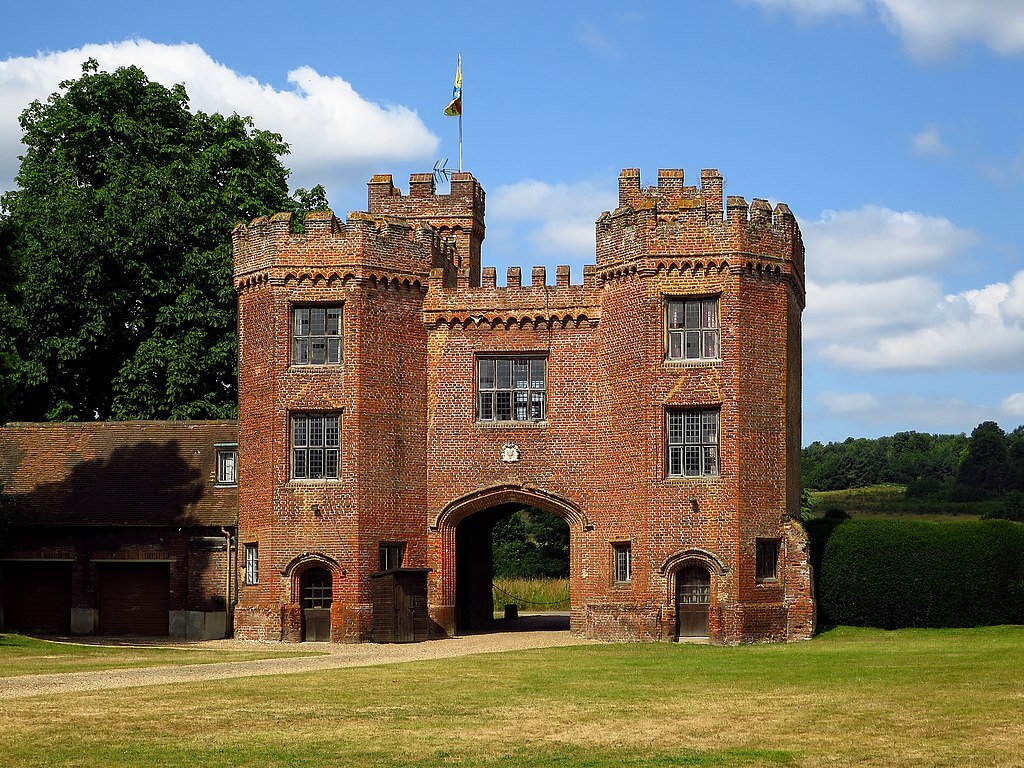
Lullingstone Castle
Lullingstone Castle is a historic manor house that has been owned by the Hart Dyke family for twenty generations. The history of the manor dates back to the time of the Domesday Book though the current manor house dates back to 1497.
Despite its name, the house is not a castle (nor does it look like one), but it was visited by King Henry VIII and Queen Anne. And that’s not the only Royal connection. Zoe Dyke creates Lullingstone Silk Farm that was visited by Queen Mary. The farm created silk for the coronation robe of King George Vi and the wedding dresses of Queen Elizabeth and Princess Diana.
Surrounding the house is the World Gardens of Plants which is created by the castle’s current owner. The park also houses some of the oldest oak trees in Britain.
Where: Eynsford
Built: 1497
Visitor information: the gardens are open April to October. The house is only open on event days and Bank Holidays. Visit the website for more information.

Knole
Knole is a former Archbishop’s Palace and country house in Kent. The 15th century country house is one of the largest houses in England. Knole is a beautiful example of Early Jacobean architecture, the house transformed from an archiepiscopal palace to a hunting palace of Henry VIII (and his daughter Mary also lived here) and eventually it became an aristocratic treasure house for the Sackville family. The home now shows a world-class collection of art, furnture, and tapestries.
Where: Sevenoaks
Built: 15th century (with later additions)
Style: Jacobean
Visitor information: Th house i open to the public. Visit the website for more information.

Chartwell
Chartwell is a country house in Kent that was the home of Sir Winston Churchill for more than forty years. The origins of the house date back to the 14th century but it was rebuilt and extended by architect Philip Tilden for Winston Churchill. In 1946 the Churchill’s needed to sell Chartwell but it was acquiered by the National Trust and they retained a life tenancy.
Surrounding the house is a 20th century flower garden that is wonderful to visit every season. From the garden, you also have a lovely view over the weald of Kent.
Where: Westerham
Built: 1923
Style: Vernacular
Visitor information: the house and garden are open to the public. Visit the website for current opening hours.
Chiddingstone Castle
Chiddingstone Castle is a historic house that was owned by the Streatfeild family from the 16th century until the beginning of the 20th century. In the early 19th century the house was rebuilt in Gothic style.
The castle was bought by Denys Eyre Bower, a former bank clerk, and antique dealer, in 1955. He bought the castle to show his collection to the public. However, Bower was convicted of attempted murder of his mistress. When he was released from prison in 1962 he again opened the castle to the public.
Today the castle shows Bower’s collection of Ancient Egyptian, Japanese, Buddhist, and Jabobite and Stuart items. You can also see the Great Hall, Victorian Kitchen, Library, Servant’s Hall, and Streatfeild Room.
Where: Chiddingstone
Built: 16th century and rebuilt in the 19th century
Style: Gothic
Visitor information: the castle is open Sunday to Wednesday. Visit the website for more information.
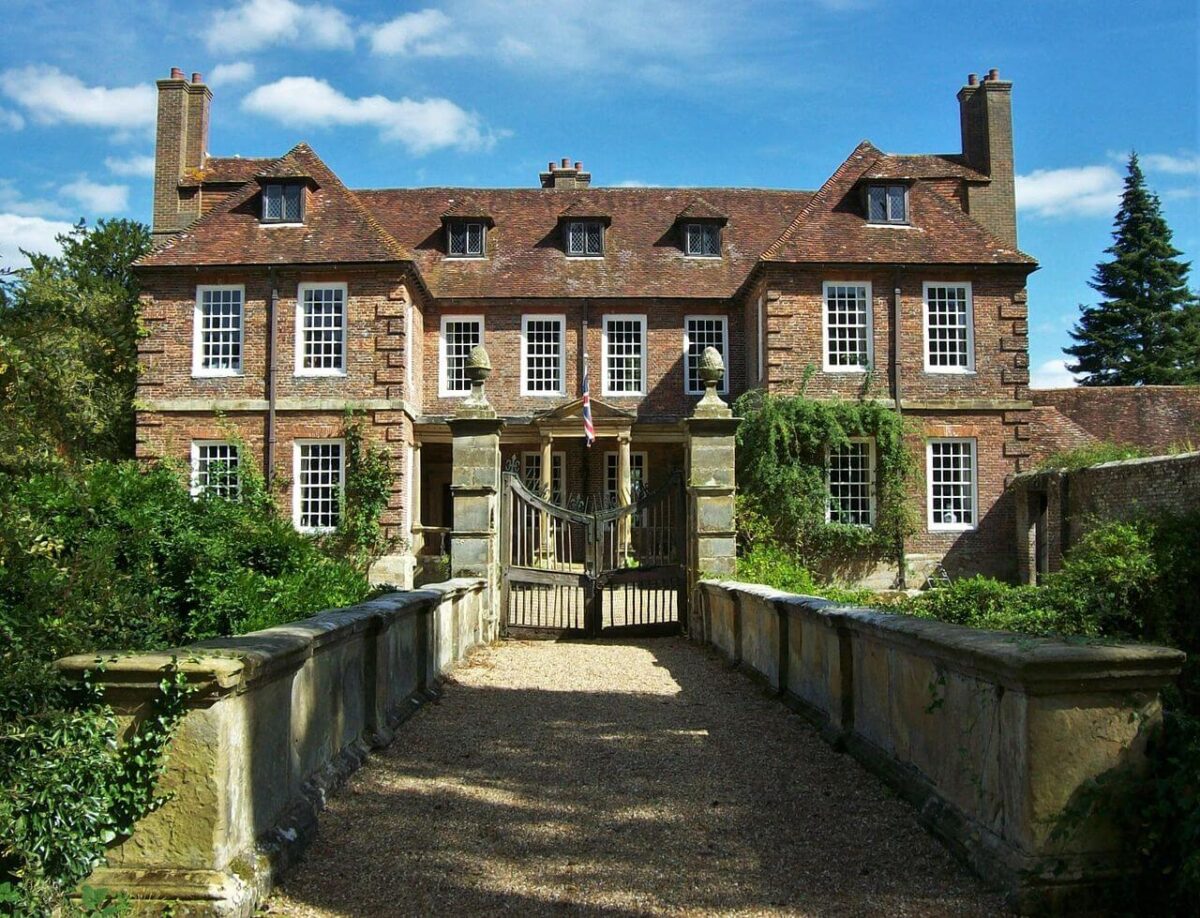
Groombridge Place
Groombridge Place is a 17th century moated country house designed bySir Christopher Wren. The first owner of Groombridge place Philip Packer designed the gardens together with horticulturalist John Evelyn. The 17th century grid layout of the garden can still be seen today.
The country house is most famous for being the film location of Longbourn in Keira Knightley’s Pride and Prejudice movie adaptation.
Where: Groombridge
Built: 1662
Visitor information: the house is not open to the public but the gardens are open. Visit the website for more information.

Hever Castle
Hever Castle is the childhood home of Anne Boleyn, the second wife of King Henry VIII. The oldest part of the castle dates back to 1270 and in 1462 it was converted into a Tudor manor house by Geoffrey Boleyn. After the death of Anne’s father the castle was given to Anne of Cleves (Henry VIII’s fourth wife).
In 1903, the castle was bought by American millionaire William Waldorf Astor. He restored the manor and added a Tudor village (the Astor Wing) and an Italian Garden.
Where: Hever
Built: 13th century
Style: Tudor
Visitor information: the castle and gardens are open daily. Visit the website for current opening hours.

Sissinghurst Castle
Sissinghurst Castle is a Tudor castle that is best known for its famous gardens. The gardens are created by poet and writer Vita Sackville-West an her husband Harold Nicolson.The garden is divided into ten smaller garden rooms, each with their own style.
Where: Sissinghurst
Visitor information: the gardens are open to the public. Visit the National Trust website for more information.

Upnor Castle
Upnor Castle is an Elizabethan artillery fort located on the banks of the River Medway. The castle was built to protect the English warships that were moored at Clatham dockyards. Despite these intentions, in 1667 the English fleet was destroyed when the Dutch Republic launched an attack.
Where: Upnor
Built: 1559
Visitor information: the castle and gatehouse are open to the public, Visit the website for more information.

Sutton Valence Castle
Sutton Valence Castle is a ruined Norman fortification that was located on a strategic spot overlooking a road to the English south coast. The castle was built in the 12th century and it was given to William de Valence in 1265 by his half brother King Henry III.
The ruined castle is now owned by English Heritage who have opened the ruins to the public. From here, you have a wonderful view over East Sussex and the Weald of Kent.
Where: Sutton Valence
Built: 12th century
Visitor information: Free to visit during daylight hours
Eynsford Castle
The ruined castle was built on the location of an Anglo Saxon manor in the 11th century. The castle is a rare example of a Norman “enclosure castle”. The castle had an inner and ouer bailey, protected by a stone curtain wall. Parts of this curtain wall survived, together with the remains of the Hall building.
Where: Eynsford
Built: 11th century
Style: Norman
Visitor information: the castle is managed by English Heritage. Visit the website for more information.

